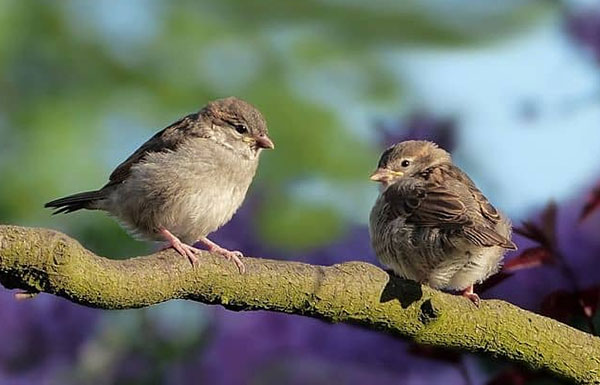How do birds communicate? It’s a question that sparks curiosity every time we pause to listen to the chorus outside our windows. Their voices rise at dawn, filling the air with a blend of songs and calls that may sound beautiful to us but serve a deeper purpose to them. For birds, every sound and gesture is part of a complex system of survival, warning of danger, claiming territory, finding a mate, or simply keeping in touch with their flock.
When we start paying closer attention, we realize birds are not just background music to our mornings; they are skilled communicators with messages we can learn to read. Understanding their language brings us closer not only to the birds themselves but also to the natural world they reflect.
What Is the Communication System of Birds?
Birds have developed a fascinating system that mixes sound, sight, and even touch. But what is the communication system of birds, really? At its heart, it’s about survival and connection.
They send warning cries when danger is near, sing to win a mate, and use body postures to keep rivals at bay. Picture a puffed-up blackbird on your lawn, standing tall and fierce – it’s saying, “This space is mine.”
Now pause for a second. Think of the last time you saw a bird tilt its head, flutter its wings, or fluff its feathers. Did you realize that was its language in motion?
Bird Song vs Call: What’s the Difference?
Birds use two main types of sounds: songs and calls.
- Songs are longer, often more musical, and usually linked to romance or territory. A nightingale’s rich notes or a robin’s early morning tune both say, “I’m here, I’m strong, and I’m ready.”
- Calls, on the other hand, are shorter and sharper. These sounds help parents and chicks stay in touch, or alert the flock to food or danger.
If you’ve ever jumped at the sudden shriek of a crow, you’ve heard a call in action. Want to play a little game? Next time you’re outdoors, close your eyes for a minute. Can you tell whether you’re hearing a song or a call?
Bird Body Language: The Silent Conversation
Words aren’t always needed, and the same goes for birds. Their bodies speak volumes. From tail flicks to wing shakes, each movement carries meaning.
A raised crest can signal excitement, while a slow bow might invite peace. If you’ve ever seen two pigeons gently touching beaks, you’ve witnessed affection in its purest form.
Try this today: watch the sparrows in your garden or park. Notice their posture and small movements. What do you think they’re trying to say?
Birds Chirping at Night: Meaning Behind the Mystery
Hearing birds chirping at night can feel magical or puzzling. But what does it mean? Often, it’s linked to courtship, territory defense, or even confusion caused by artificial lights. Nightingales are known for their nocturnal serenades, filling the quiet darkness with song.
So the next time you hear those midnight notes, pause and ask yourself: is this bird calling for love, defending its space, or simply adjusting to our human world?
How to Recognize Bird Calls
At first, all bird sounds may blur together, but with practice, you’ll start to notice the differences. Alarm calls are sharp and urgent. Contact calls are softer, almost like whispers among friends.
Start small. Listen for the blackbird’s rich song or the robin’s cheerful notes. Apps and guides can help, but nothing beats sitting quietly outdoors with your ears wide open.
Imagine yourself as part of their flock, slowly learning the meanings behind every chirp. Doesn’t that feel like unlocking a secret code?
How Do Birds Communicate With Humans?
Yes, they do, though not in the same way they talk to each other. Birds notice our presence and often adjust their behavior. A garden robin may come closer if you put out food, or a crow might follow you with curious eyes, waiting for a snack.
They may not speak our language, but through their actions, they let us know when they trust us, fear us, or even welcome us into their world.
Pause for a moment: does a bird in your garden seem to recognize you? That could be its way of saying, “I know you, and I feel safe.”
Do Birds Understand When They Speak?
This question touches on something truly remarkable. Do birds understand when they speak? Research suggests they do. Calls and songs aren’t random; they’re intentional. A chick calling for food knows its cry will bring a parent’s attention. A territorial song warns others to stay away.
And just like us, some birds even learn “dialects.” A robin in one part of the UK may sound slightly different from one in another region. Isn’t it amazing that even birds have accents?
What Is Used by Birds to Communicate?
The list is longer than you think:
- Sounds: songs, calls, whistles, and alarms.
- Movements: body postures, feather displays, wing gestures.
- Colors: bright plumage during mating season, like a peacock’s shimmering tail.
- Touch: gentle beak taps, grooming, or even bill-rubbing between mates.
Every one of these tools helps them send a clear message, whether to a mate, a rival, or even us.
Conclusion
In the end, the answer to how birds communicate is all around us through their songs, calls, colors, and movements, reminding us that nature is always speaking, if we choose to listen.
